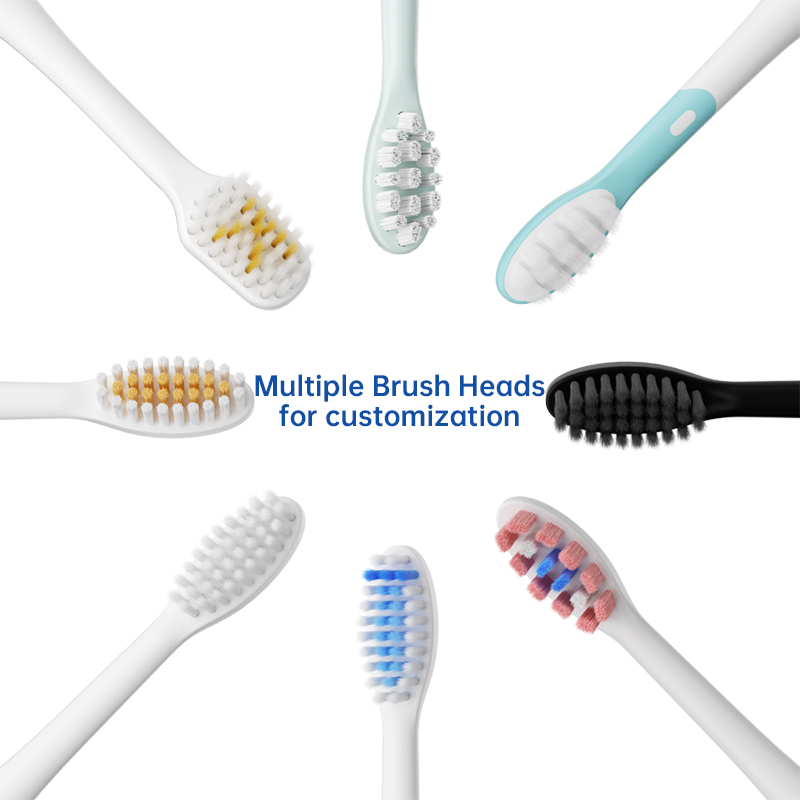Wireless charging has become a popular trend in consumer electronics, and electric toothbrushes are no exception. For oral care product brands considering OEM partnerships, understanding both the pros and cons of integrating wireless charging into toothbrushes is essential. While this technology offers convenience and modern appeal, it also comes with technical challenges and design trade-offs that can affect long-term performance and cost.
The main benefit of wireless charging lies in convenience and hygiene. Unlike traditional plug-in chargers, a wireless charging dock reduces wear and tear on connectors and minimizes the risk of water-related damage. From a branding perspective, a sleek, contactless charging solution can position your product as a premium offering. OEM factories often highlight this feature when helping brands differentiate in competitive markets.
Despite its advantages, there are several limitations of wireless charging that brand owners must consider. These include slower charging times compared to wired options, increased heat generation, and higher manufacturing costs. More importantly, charging efficiency often varies depending on how the toothbrush is placed on the dock. For mass-market consumers, this inconsistency can lead to dissatisfaction and potential returns.
Many wireless toothbrushes use electromagnetic induction. However, induction charging issues can arise during product development, especially if the alignment between the coil in the brush and the dock is not precise. This misalignment can cause incomplete charging cycles or energy waste. OEM manufacturers often need to optimize coil design and casing materials to improve stability and efficiency, adding to R&D complexity.
From a production standpoint, Wireless Charging toothbrush OEM optimization is possible by adjusting charging coil placement, enhancing waterproof sealing, and selecting durable materials. Collaborating with experienced factories enables brands to refine product designs for both performance and cost-effectiveness. OEM partners can also test different charging dock shapes and materials to ensure stable consumer experiences.
For brands concerned about cost or consumer usability, there are alternative power solutions for brand customization. These include USB-C direct charging, replaceable rechargeable batteries, or hybrid solutions combining wireless and wired charging. Each option has trade-offs in terms of user experience, price, and durability. OEMs can work with brands to customize power solutions that best align with market positioning, whether targeting premium or budget segments.
Wireless charging in electric toothbrushes offers a modern, user-friendly experience but comes with challenges related to cost, efficiency, and product reliability. By carefully weighing the pros and cons of wireless charging, addressing induction charging issues, and considering alternative power solutions for brand customization, brands can collaborate with their OEM partners to create products that balance innovation with practicality.
For oral care brands, the key is to approach Wireless Charging toothbrush OEM optimization strategically—leveraging factory expertise to overcome technical hurdles while delivering a product that meets consumer expectations. Contact Powsmart if you wanna know more!https://www.powsmart.com/contact-us/
.jpg)
Is the Colorado mountain toothbrush really a Colorado durable toothbrush — proven?
.jpg)
Bulk Electric Toothbrush Houston
.jpg)
LA oral care wholesaler
Occlusal Discomfort Plus Salivary Alteration – Alarming?
.jpg)
Electric Toothbrush Distributor Austin
.jpg)
USA Wholesale Oral Care Products

POWSMART USA – Innovative Sonic & Smart Electric Toothbrush Manufacturer
.jpg)
Electric Toothbrush Supplier Phoenix
.jpg)
best toothbrush for braces
.jpg)
OEM/ODM toothbrush with pressure sensor
Nozzle Clogs + Water Leakage — Is Your Irrigator Still Usable?
.jpg)
Wholesale Electric Toothbrushes USA
.jpg)
Wholesale Electric Toothbrush Los Angeles
.jpg)
Best Electric Toothbrush With Pressure Sensor in Houston?
.jpg)
Why choose a US toothbrush distributor for ADA toothbrush compliance?
electric toothbrush wholesale California

electric toothbrush heads Charcoal Infuse-Round
.jpg)
Florida Electric Toothbrush – Powsmart PTR-C8

Customization Teeth Whitening Gel

electric toothbrush heads Deep Clean

Electric toothbrush heads Charcoal Infused-Diamond

electric toothbrush heads Ultra Soft

electric toothbrush heads Regular Clean

Private Label Whitening Gel
whstapp
whstapp
National Toll-Free Service Hotline
+86 755 86238638